It is an unfortunate quirk that when I try to think of food scenes in literature, one of the first that comes to mind is from the opening pages of a 1928 classic of transgressive pornography, The Story of the Eye, by the French philosopher Georges Bataille (1897–1962). In the scene in question, Simone, the female protagonist, lifts up her skirt and dips an exposed body part into the kitty cat’s saucer of milk while the sixteen-year-old male narrator looks on. Simone is wearing “a black pinafore with a starched white collar.” She says, “Milk is for the pussy, isn’t it? … Do you dare me to sit in the saucer?” “I dare you,” the narrator answers—“almost breathless.” The scene is sexy and also a perfect riff, with the cat, the body part, the milk, and the potential lapping up.
Strangely, when I have this thought, a dish springs to mind as well—a terror of haute French cuisine called floating islands, or iles flottante, in which meringue towers drift lazily in a pool of crème anglaise. The meringues can be baked or poached and, in a recipe I found from The Cordon Bleu Cookbook, are served dusted with crushed pink Jordan almonds. The dish’s relevance to The Story of the Eye is that it’s made mostly from milk (starring in the passage above) and eggs, which participate in one of the text’s main metaphor chains, linked to eyes and testicles. Eggs, for the narrator, are “extraordinarily meaningful” and are used for bizarre and grotesque purposes. He explains, “Another game was to crack a fresh egg on the edge of the bidet and empty it under her: sometimes she would piss on it, sometimes she made me strip naked and swallow the raw egg from the bottom of the bidet.” Milk in the book participates in a second metaphor chain, this one of fluids, primarily semen and urine. (Coincidentally, the meringue of my iles flottante floats in a pool of creamy yellow liquid. Mmm … )
After the book’s recognizably erotic beginning, it veers off into the territory of extreme transgression, with Simone and the narrator rampaging across Europe, peeing on each other and committing ever more revolting and violent sexualized acts. They eventually rape and kill a priest, taking out his eyeball and using it for sex play. (“The caress of the eye over the skin is so utterly, so extraordinarily gentle … Simone meanwhile amused herself by slipping the eye into the profound crevice of her arse … ”) This is unappetizing and makes questionable grounds for cooking food that anyone might want to eat, but it isn’t what had been holding me back from cooking with Georges Bataille. Instead, my hesitation stemmed from the fear that I didn’t quite understand The Story of the Eye.
Bataille was “a veritable cultural hero, of the French literary and philosophical avant-garde,” according to Susan Suleiman, the author of a collection of essays called Subversive Intent: Gender, Politics, and the Avant-Garde. Bataille edited an important journal and wrote books of theory, including one on eroticism and death, one on evil in literature, and one positing a new economics in which the central problem is abundance, not scarcity. (In the Amazon era, that last one sounds pretty interesting.) Suleiman quotes a contemporary as saying, “No worthwhile thought could take place after 1968 that did not take account of … the thought of Bataille.”
One way that pornography fit in, Suleiman writes, was as an avant-garde strategy to “promote to a central place that which had been marginal.” In the two academic essays accompanying my copy of The Story of the Eye, Susan Sontag makes the argument that pornography can be taken seriously as literature, and Roland Barthes focuses on the ingeniousness of Bataille’s metaphorical structure; the textual games he played were a fertile source of inspiration for later critical theorists. Focusing only on the metaphorical structure when people are raping and killing priests, though, has always seemed to me to be missing something. It wasn’t until I went back and read Bataille’s “Coincidences,” an essay posed as the novella’s complement, that I began to have an idea as to what.
In “Coincidences,” Bataille explains the traumatic childhood memories that he unearthed when he “substituted a perfectly obscene image for a vision apparently devoid of any sexual implication.” This could be said to be the strategy of the book, with its eyes and eggs and sexualization of other nonsexual items and acts. Bataille discovers that “precisely the two images that probably most upset me had sprung from the darkest corner of my memory—and in a scarcely recognizable shape—as soon as I gave myself over to lewd dreams.” This puts the power of the transgressive in a more interesting light, as a personal strategy as well as an academic one. It also gave me a shock—the shock of the avant-garde!—to realize that the dish I have been persistently linking to the book, the floating islands, represents a traumatic memory of my own, unlocked by reading Bataille.
In brief, when I was nineteen, I was engaged to a fellow college student, the son of a bona fide French playboy. On school vacations, my fiancé and I would spend time at his father’s villa in the South of France, where there were servants, a chef, a pool overlooking the Mediterranean, and a constantly changing cast of houseguests. The father stayed there with his thirty-year-old mistress, whom everyone disdained for being “the daughter of a butcher.” Dinner every night was a multicourse affair, served on a white tablecloth, with wine pairings and a profusion of confusing cutlery. As a child of the American suburbs, I was transfixed by all this but also deeply uncomfortable. I spoke bad French. I wouldn’t take my top off at the pool. When confronted with unfamiliar foods at dinner—and they were all unfamiliar—I ate only the bread. People disdained me nearly as much as they did the butcher’s daughter, and they teased me at dinner in French I couldn’t understand. I wish I could remember all the fabulous foods served at these dinners, which seemed to last entire lifetimes in slow motion, but I remember only one: the floating islands. The dish arrived in the midst of a drunken haze at the end of a long evening. It was served family style, a vast lake of crème anglaise with enough bobbing meringues to serve a dozen guests. The French dinner guests exclaimed in delight. My fiancé’s father chased the islands around the lake with a ladle and giggled. I don’t recall if I ate this dessert, but I know it seemed like the pinnacle of awful decadence.
Truly a traumatic memory, dislodged by The Story of the Eye.
So, readers, I made the floating islands. Naturally, after all that, the process was anticlimactic, though the dessert was good. The Cordon Bleu version asks for baked meringue, whereas the one in my memory was poached, so I turned instead to my favorite Bonne Femme Cookbook (apologies to the author, Wini Moranville, for linking her to Georges Bataille). That book’s subtitle is Simple, Splendid Food That French Women Cook Every Day, and Moranville’s recipe, reproduced with some minor changes below, makes floating islands seem like something a home cook could whip up for a casual dinner. This rendition of iles flottante even has the thrifty and wonderful feature of using all the egg yellows for the crème anglaise and all the egg whites for the meringue. In addition, poaching cooks the meringue in a few seconds, as opposed to the hours required to dry it in the oven. My version adds more sugar to the meringue than Moranville calls for; this makes it denser and easier to work with. As a finishing touch, I even added some impromptu “eyes” on top with crushed Jordan almonds.
No eggs were abused in the production of this dessert. Bon appétit!
Floating Islands
(Recipe adapted from The Bonne Femme Cookbook, by Wini Moranville)
For the crème anglaise:
2 cups half-and-half
1 tsp vanilla extract
6 large egg yolks
1/2 cup sugar
pinch of salt
For the meringue:
6 egg whites
pinch of salt
1 cup sugar
handful of Jordan almonds, crushed, for garnish
To make the crème anglaise:
Place the half-and-half in a medium-size saucepan. Cook over medium heat until just steaming.
In a medium-size bowl, whisk together the egg yolks, sugar, and salt until thick and lemon colored. Slowly whisk the warm half-and-half into the egg mixture (if you do this too quickly, the eggs will curdle). Return the custard to the saucepan. Cook over medium-low heat, stirring constantly, until the mixture thickens and coats the back of a wooden spoon. Remove from the heat, and add the vanilla extract. Strain the sauce into a bowl through a fine-mesh sieve.
To make the meringue:
In the bowl of an electric mixer, beat the egg whites and salt on high speed until soft peaks form. Slowly add the sugar while continuing to beat to stiff peaks.
Fill a large skillet halfway with water. Heat to a boil over high heat. Reduce the heat until the water is just simmering. Using a large oval-shaped spoon, scoop up a mound of meringue about the size of the spoon. Using a small spatula, scoot the oval from the spoon into the simmering water. Repeat quickly with five more ovals to place a total of six ovals at a time in the simmering water. Let them cook for a minute. Turn them with a slotted spoon, and let them cook until delicately firm but not sticky, about a minute more.
To assemble:
Serve one meringue per guest on a small plate, floating on a pool of crème anglaise. Sprinkle with crushed Jordan almonds, as desired.
Valerie Stivers is a writer based in New York. Read earlier installments of Eat Your Words.
from The Paris Review https://ift.tt/2yOSDmz
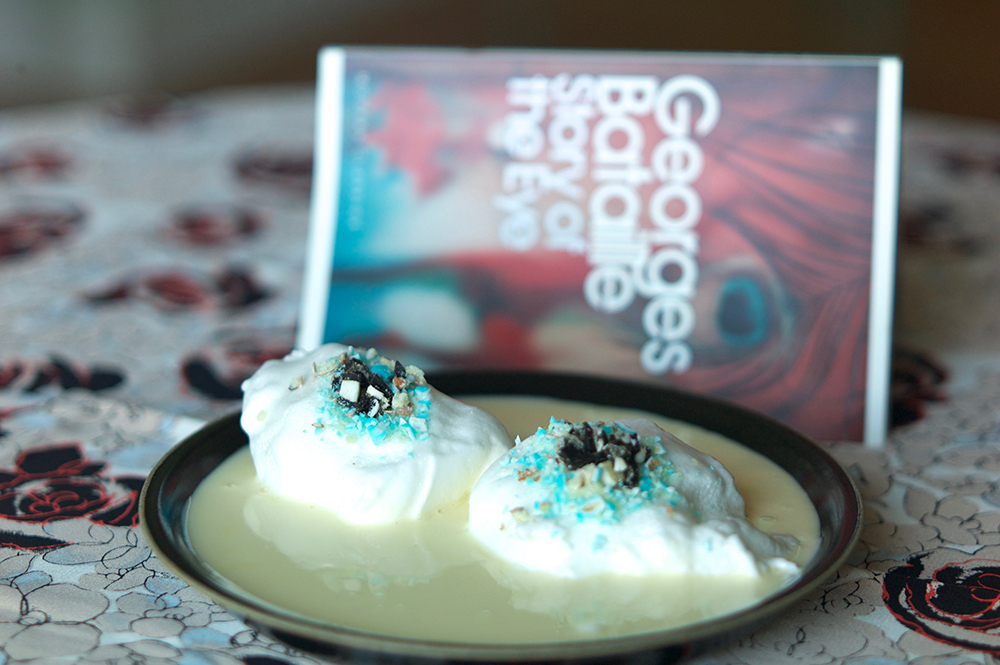
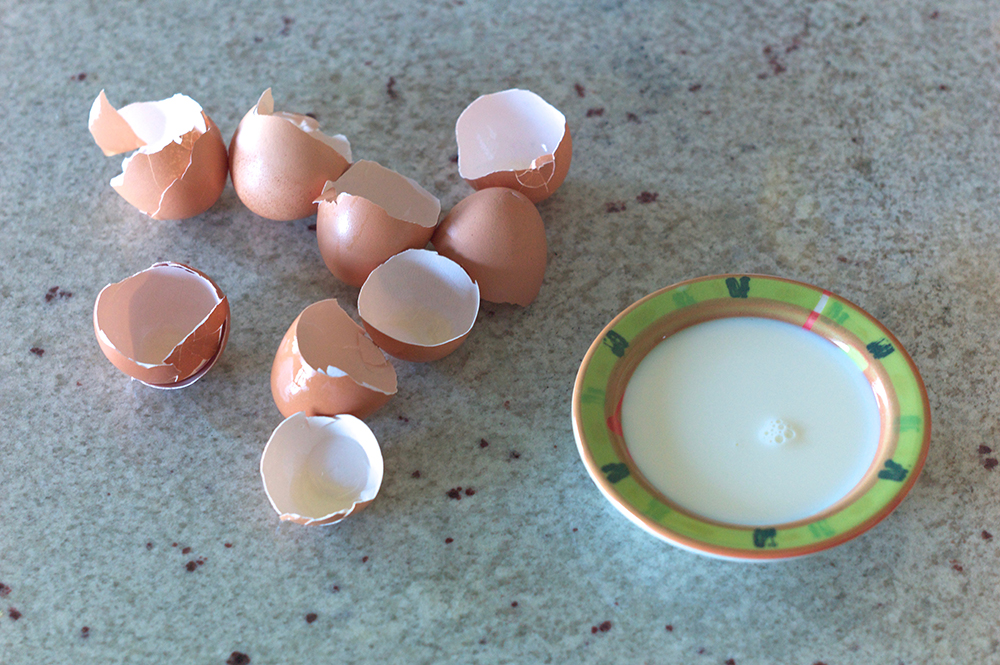
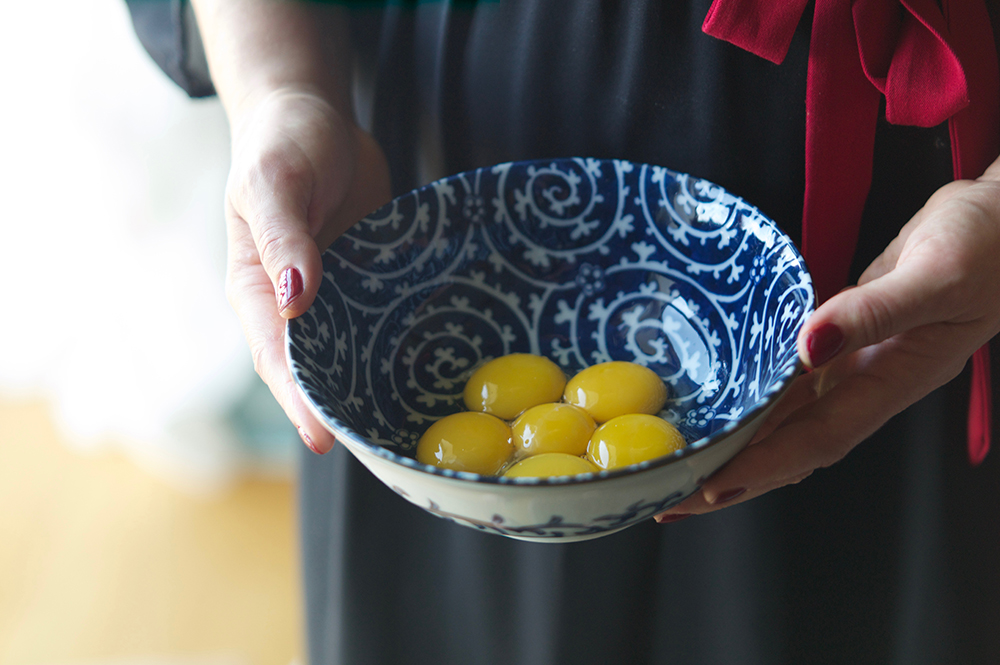
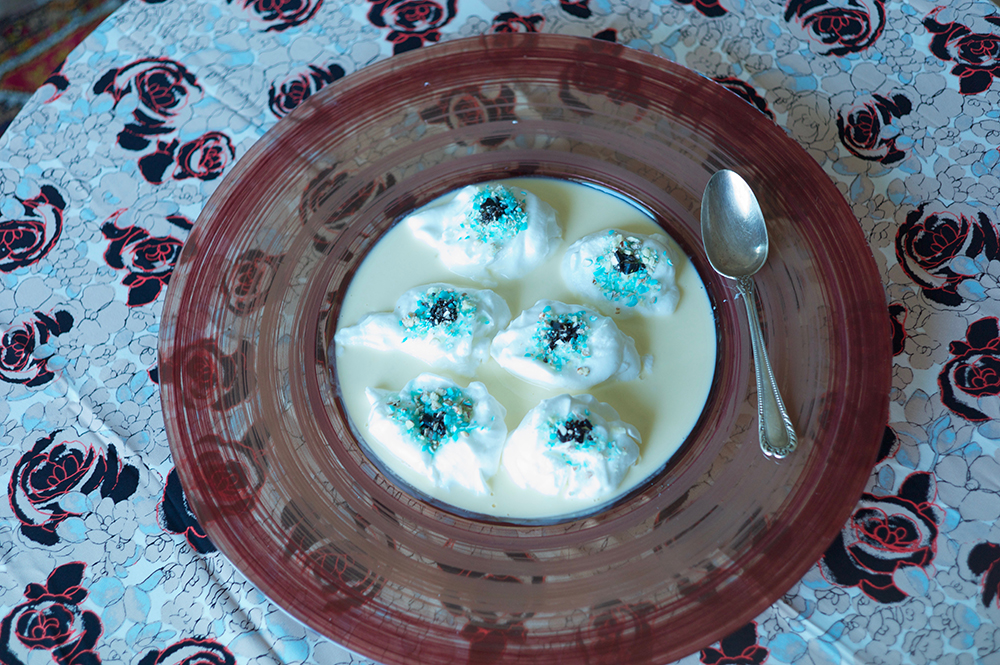
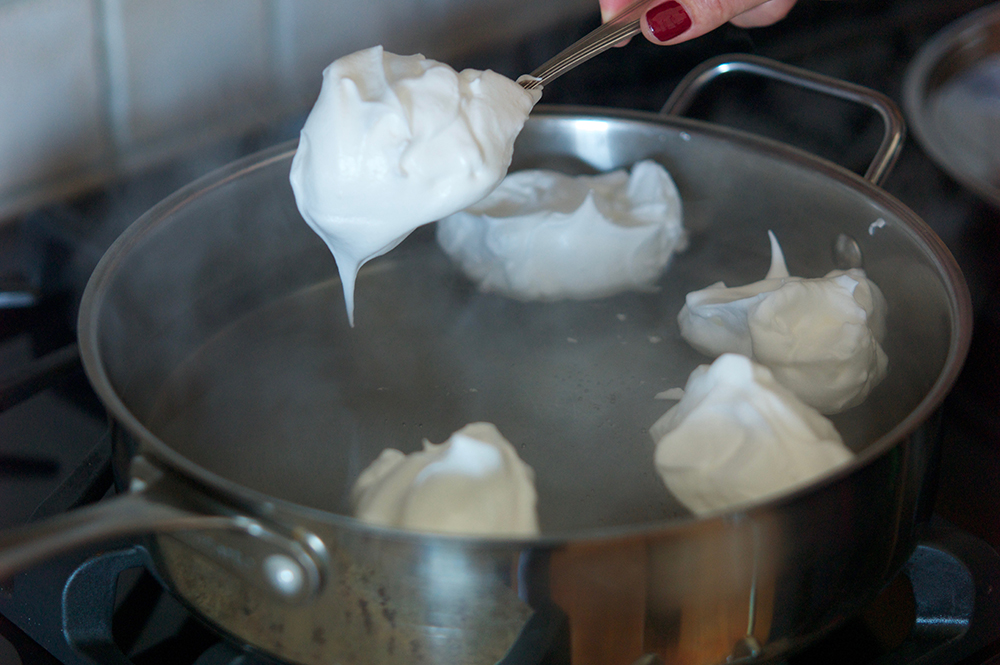
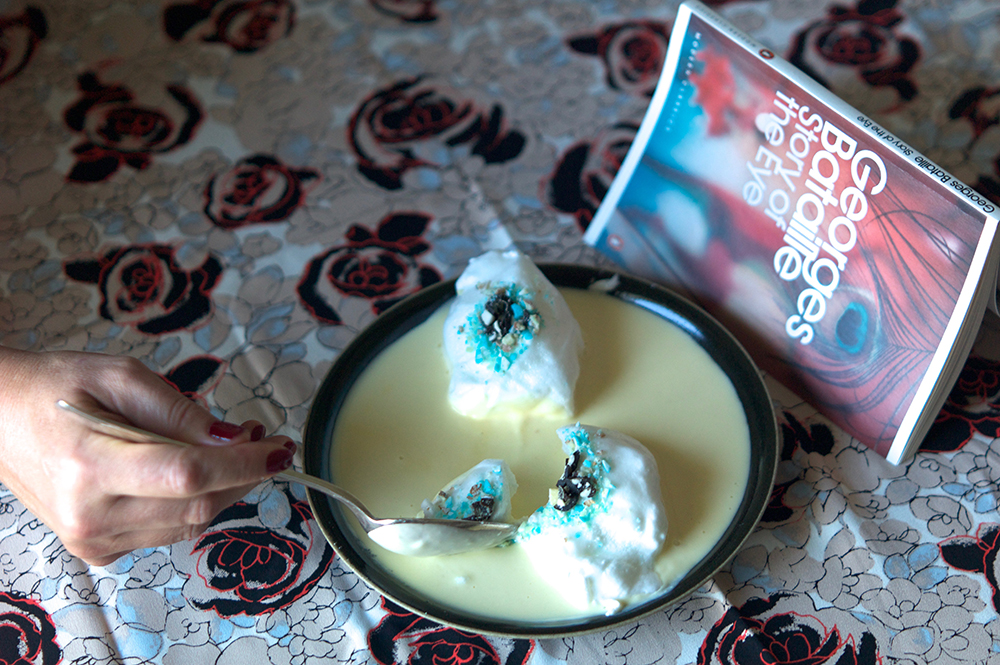
Comments
Post a Comment